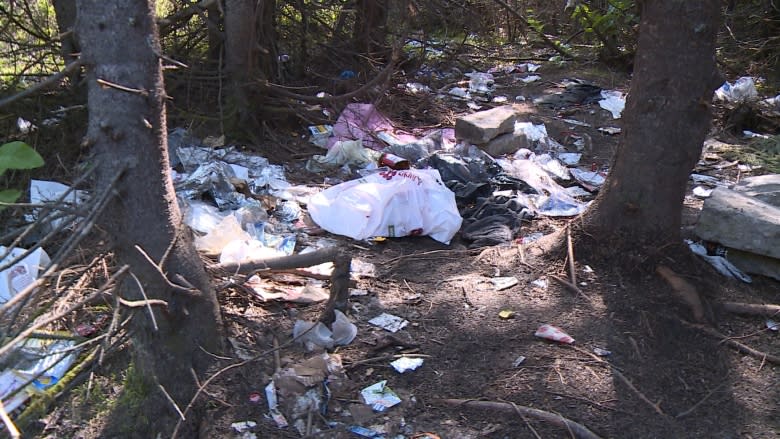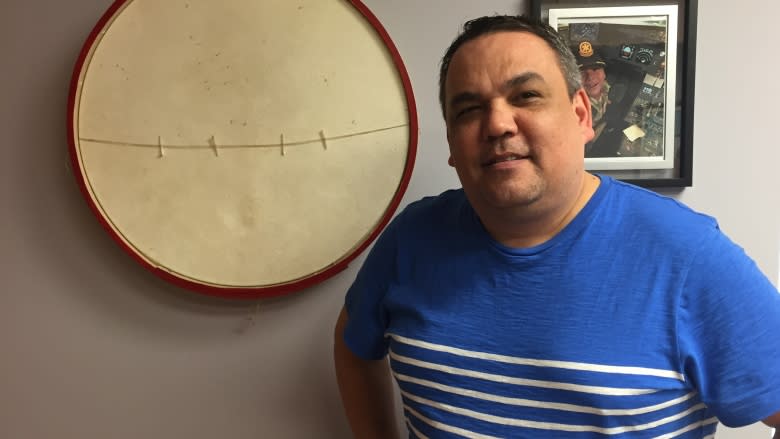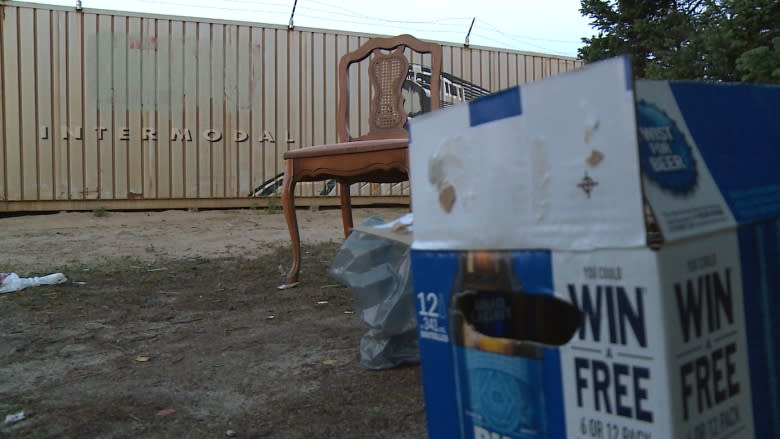Majority of Happy Valley-Goose Bay transient population not homeless
Most people occupying the roughly 27 makeshift camps in Happy Valley-Goose Bay's wooded areas have a place to stay.
"I won't call them homeless," said Jackie Compton-Hobbs, Happy Valley-Goose Bay town councillor and co-chair of both the community's housing and homelessness coalition and women's council.
"They have homes back in their communities. They're choosing to live up here in the woods.… So we have to take that route to come up with ways that we can help these people to deal with their mental health and addictions."
Compton-Hobbs estimates that of the 20 to 25 people visiting or living at sites spread around town, about three or four have nowhere to turn.
Potential causes
"It's every culture that's there. Whoever lives in Goose Bay, North West River or Sheshatshiu, they're all there. They're all together," said Sheshatshiu Innu First Nation Chief Eugene Hart.
He too attributes the growth in the transient group to addiction and mental health, saying recourses for that population —like full-day programming at the town's shelter — are lacking.
Another factor, he said, is the banishment punishment sometimes applied after criminal proceedings.
"If you're not allowed to go in your hometown because of a certain thing you did, I guess you're homeless," he said.
Change in group's size
According to Compton-Hobbs, generally, around this time of year, the transient population will access the shelter, or go back to their homes or their families.
"They'll disappear until May," she said.
By then, she and various other stakeholders hope to have come up with a solution.
"We're not saying the problem is going to be fixed by May, but we're going to continue meeting," she said.
Compton-Hobbs said the hope is to have some day programming in place. "[Or] we can work with the communities to have more programming and supports in their communities to probably keep them in their communities and so on."
While Hart agrees more programming would help, he said people can't be forced into it.
"Anybody with problems, you can't make them do something they don't want to do," he said.
"I can't take your hand and say, 'You're going in there for 30 days, see you.' It doesn't work that way."
What residents should do
The camps — often on Crown or private land — are marked by trash and empty beer bottles.
Residents have voiced their safety concerns on social media.
Hart said homeowners should channel that concern by asking how to help.
"When you see the pictures on Facebook, you see the comments, 'they're dirty, they need help' — yes, we all know that."
"So, taking a picture and posting on Facebook doesn't help. It just makes the circumstances worse."





